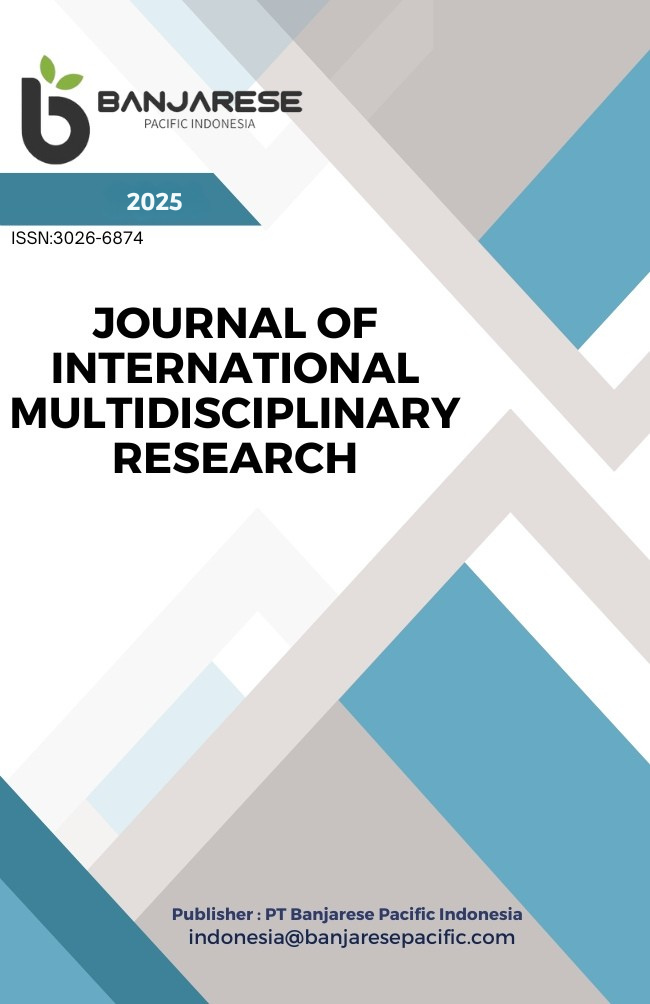TAM’s Influence on Behavioral Intention to Use M-Din Mobile Banking Usage in West Java
DOI:
https://doi.org/10.62504/jimr1322Keywords:
Behavioral Intention; mobile banking; Perceived Ease of Use; Perceived Usefulness; Technology Acceptance ModelAbstract
This study examines the influence of the Technology Acceptance Model (TAM), focusing on Perceived Ease of Use (PEOU) and Perceived Usefulness (PU), on users’ Behavioral Intention (BI) to adopt and continue using M-Din, a Sharia-based mobile banking application at Bank Muamalat in West Java. Employing a quantitative survey of 100 active M-Din users, data were analyzed using Partial Least Squares Structural Equation Modeling (PLS-SEM). The results show that PEOU significantly affects PU, and both PEOU and PU significantly influence BI; additionally, PU partially mediates the effect of PEOU on BI. This research contributes to the digital banking literature by reaffirming TAM constructs within an Islamic finance context and offers practical recommendations for optimizing Sharia-compliant mobile banking strategies. Implications for enhancing user interface design and promoting key features to boost adoption are discussed.
Downloads
References
Alalwan, A. A., Dwivedi, Y. K., Rana, N. P., & Williams, M. D. (2018). Examining factors influencing Jordanian customers’ intentions and adoption of Internet banking: Extending UTAUT2 with risk. Journal of Retailing and Consumer Services, 40, 125–138.
Ahn, J., & Back, K. J. (2019). A comprehensive analysis: Perception, innovativeness, and mobile banking usage behavior. Journal of Hospitality and Tourism Technology, 10(2), 169–188.
Arikunto, S. (2006). Prosedur penelitian: Suatu pengantar praktik. Rineka Cipta.
Belianti, A., Rachmawati, I., & Nugroho, W. (2023). Penerapan Technology Acceptance Model pada perilaku konsumen mobile banking di Surabaya. Jurnal Manajemen dan Kewirausahaan, 25(2), 90–101.
Caroline, C. C., & Hastuti, T. D. (2021). Analisis faktor-faktor yang mempengaruhi minat nasabah menggunakan M-banking berdasarkan teori TAM. Jurnal KEUNIS (Keuangan dan Bisnis), 9(2), 110–120.
Cheah, C. M., Teo, A. C., Sim, J. J., Oon, K. H., & Tan, B. I. (2011). Factors affecting Malaysian mobile banking adoption: An empirical analysis. International Journal of Network and Mobile Technologies, 2(3), 149–160.
Chitungo, S. K., & Munongo, S. (2013). Extending the Technology Acceptance Model to mobile banking adoption in rural Zimbabwe. Journal of Business Administration and Education, 3(1), 51–79.
Febrian, E., Nursiani, N., & Putri, R. S. (2022). Behavioral intention toward mobile banking in Indonesia: An extended TAM approach. Jurnal Manajemen dan Bisnis, 11(1), 45–60.
Gupta, A., Arora, N., & Jain, D. (2020). Examining mobile banking adoption in India using extended TAM. Journal of Financial Services Marketing, 25, 86–96.
Hanafizadeh, P., Keating, B. W., & Khedmatgozar, H. R. (2014). A systematic review of Internet banking adoption. Telematics and Informatics, 31(3), 492–510.
Kurniawan, D., Hidayat, A. A., & Rahmawati, L. (2022). Peran PU dalam meningkatkan loyalitas pengguna mobile banking [Internal report]. Bank Muamalat Indonesia.
Liébana-Cabanillas, F., Marinković, V., & Kalinić, Z. (2017). A SEM-neural network approach for predicting antecedents of m-commerce acceptance. International Journal of Information Management, 37(2), 14–24.
Lin, H.-F., Wang, Y.-S., & Wang, Y.-M. (2020). Understanding digital banking adoption during the COVID-19 pandemic: An integrated model. Information Systems Frontiers, 22(5), 1355–1373.
Long, Y., Khalifa, M., & Shen, K. N. (2016). Explaining user adoption of mobile banking: The roles of trust, self-efficacy, and technology anxiety. Electronic Commerce Research and Applications, 17, 85–100.
Makanyeza, C. (2017). Determinants of consumers’ intention to adopt mobile banking services in Zimbabwe. International Journal of Bank Marketing, 35(6), 997–1017.
Najiba, N., & Fahma, F. (2020). Pengaruh persepsi kemudahan penggunaan dan persepsi manfaat terhadap minat penggunaan mobile banking. Jurnal Riset Ekonomi dan Bisnis, 13(1), 39–47.
Nel, J., & Boshoff, C. (2023). Understanding m-banking adoption in developing countries: An extended TAM perspective. South African Journal of Business Management, 54(1), Article a3752.
Purwanto, A., & Loisa, R. (2020). Pengaruh Technology Acceptance Model terhadap minat penggunaan mobile banking BRI Syariah di Malang. Jurnal Ekonomi dan Bisnis Islam, 5(1), 13–22.
Setiawan, B., Wibowo, A., & Saputra, H. (2023). Analisis Technology Acceptance Model terhadap perilaku penggunaan mobile banking di Surakarta. Jurnal Ekonomi dan Bisnis, 16(1), 77–89.
Sinaga, D. (2004). Statistika dasar. EGC.
Sitohang, L., & Hudi, I. (2023). Penerapan M-Banking dalam meningkatkan jasa layanan perbankan di Bank Rakyat Indonesia Kantor Cabang Pekanbaru Sudirman. Jurnal Akuntansi AKTIVA, 4(2), 134–145.
Sugiyono. (2014). Metode penelitian kuantitatif, kualitatif, dan R&D. Alfabeta.
Venkatesh, V., & Davis, F. D. (2000). A theoretical extension of the Technology Acceptance Model: Four longitudinal field studies. Management Science, 46(2), 186–204.
Verawati, L., Putra, R., & Amanda, S. (2024). Intention to use mobile banking application: Empirical evidence from Indonesia. The International Journal of Business Review, 17(1), 1–15.
Downloads
Published
Issue
Section
License
Copyright (c) 2025 Erick Ermawan, Ronny Samsul Bahri (Author)

This work is licensed under a Creative Commons Attribution-ShareAlike 4.0 International License.













